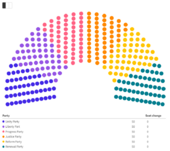Council of Ministers
History
The Council of Ministers, or Cabinet, in the Kingdom of Saen has a rich history that traces back to the early days of the monarchy. Initially established as an advisory body to the monarch, its role and composition have evolved over time.
1. Founding Period (18th Century): The Council of Ministers was formally instituted during the reign of King Alexander I in the late 18th century. It was composed of royal advisors and nobles who assisted the monarch in governing the realm. During this period, the council primarily focused on matters of state administration, defense, and diplomacy.
2. Constitutional Reforms (19th Century): With the introduction of constitutional reforms in the early 19th century, the Council of Ministers underwent significant changes. It became accountable to the parliament, with its members drawn from elected representatives as well as appointed officials. This marked a transition towards a more representative and accountable form of government.
3. Modernization and Expansion (20th Century): Throughout the 20th century, the Council of Ministers expanded its scope and responsibilities in line with the country's modernization efforts. As Saen experienced economic growth and social development, the council's portfolio expanded to include areas such as education, healthcare, infrastructure, and economic policy.
4. Democratization (Late 20th Century): The late 20th century saw the consolidation of democracy in Saen, leading to further reforms in the Council of Ministers. Greater emphasis was placed on transparency, accountability, and the rule of law. The council became more diverse, with members representing a wide range of political parties, ideologies, and interest groups.
5. Contemporary Era (21st Century): In the 21st century, the Council of Ministers continues to play a central role in the governance of Saen. It remains the principal executive body responsible for formulating and implementing government policies. The council's composition reflects the diversity of Saen's society, with members drawn from various ethnic, religious, and regional backgrounds.
Throughout its history, the Council of Ministers has adapted to changing circumstances and challenges, remaining a key institution in Saen's political landscape. It continues to evolve in response to the needs and aspirations of the Saenese people, ensuring effective governance and the advancement of the nation.

